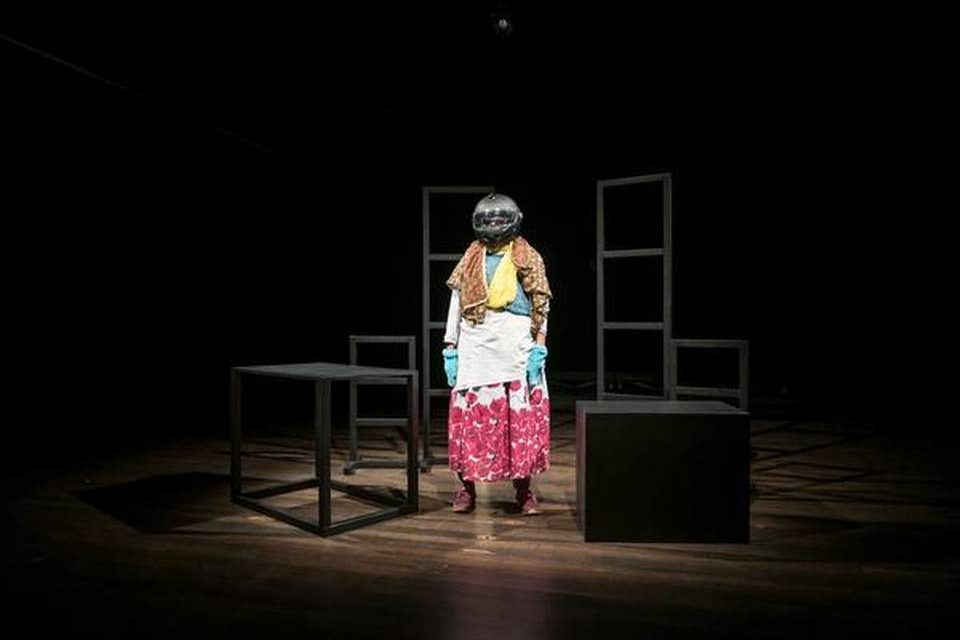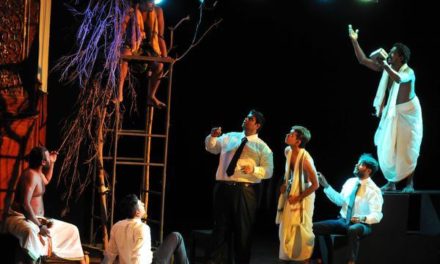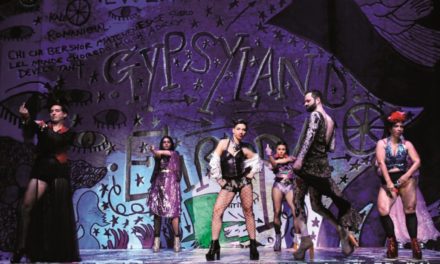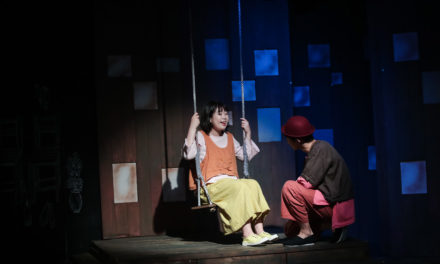“The Stage in the Drawing-Room” is the title of a 19th-century instruction manual by Henry Dakin on theatre at home, a concept that appears to have been around since time immemorial but each time it catches a new wind, it is spoken of as something unusual or wayward. Dakin’s tome was meant for amateur practitioners, and sought to safeguard them, through his eager ministrations, from the unsatisfactory outcome of “the mishaps attending the entertainment.” The practical details of pulling off such a feat are laid out in neat chapters — building makeshift prosceniums, setting up curtains, or the canny disguising of cottage interiors to best feed the delusion of skies, forests and mythical realms.
In the 2004 film, Finding Neverland, J.M. Barrie arranged to have an abridged production of Peter Pan performed at the home of Sylvia Llewelyn Davies — whose children inspired the play — was too ill to make the premiere. Actors, props, and musicians were trooped off to the residence but of course, true to movie magic, the humble auspices soon transform into Neverland itself, with its woodland glades and breathtaking panoramas. The “real thing” might never have afforded such a colossal suspension of disbelief even to those with the most hyperactive imaginations.
Snug environs
Latter-day adherents of “theatre at home” swear by the degree of intimacy achieved by performances separated from its spectators by mere inches. Earlier this year, Theatre Flamingo’s immersive show, Read Me in 5D Zone, commandeered an entire bungalow in Kandivali and created an episodic narrative that kept its dozen-at-a-time audiences thoroughly engaged. Niharika Negi’s piece, 36 Questions in Proximity of a Conversation, took place in a villa in Versova. These are high-concept productions in which site-specificity is an important consideration, and every moment has to be calibrated to keep pace with the shifting rhythms of its audiences. However, there is a multitude of plays — solo performances in particular — that lend themselves to home settings much more easily. Jyoti Dogra’s Notes on Chai and Mallika Taneja’s Thoda Dhyan Se have both played out in umpteen drawing-rooms to packed audiences. Productions designed for home audiences can be put together very economically, and are portable enough to make any setting its own.
As part of the Serendipity Arts Festival in Goa, curator Atul Kumar has roped in plays for theatre-at-home runs. These include Niketan Sharma and Trinetra Tiwari’s Adrak, an urban drama that has been doing the rounds of fringe spaces in Mumbai; and Anirudh Nair’s Sonnets c. 2018, which reconfigures Shakespeare’s Sonnets as contemporary vignettes that “unravel in bedrooms, bathrooms, kitchens, and verandahs.” Kumar’s interest in this always-inchoate always-vintage form dates back to the early 2000s, when his troupe, The Company Theatre, performed plays like Miles Mander’s The Flying Doctor and Anton Chekhov’s Lady With Lapdog in homes, terraces, and garages. The performances were followed by discussions and impromptu soirées. TCT member Rachel D’Souza remembers performances of the Chekhov play with Neeraj Kabi, which were organized at the behest of hosts who signed on to offer their residences as venues. “There were never any tickets charged, only a hat-collection at the end of the show,” she says. More than economic viability, it was the sheer frisson of live performance in snug environs that kept them going.
Shifting venues
In Goa, Adrak’s run took place in October. There were hiccups associated with the weather in an outdoor space. Dheer Hira, an actor in the play, says, “It drizzled an hour before the first performance, so everything — lights, instruments, set, props — had to shift inside.” Finally, they were able to perform outside, completing the set-up in front of audiences trickling in. Their next venue was at the Village Studio, a cafe and space for alternative arts owned and run by artist Laila Vaziralli. On the third day, Adrak was performed in a co-working space with a formal corporate vibe. The team decided to use the space’s modular furniture as the play’s setting. “Suddenly our house in the play was much more in sync with the space,” says Hira. Even the large LED screen in the back was used to project the image of a window tinted with moisture from the rains outside. Each show in the run was unique in its own way.
This article originally appeared in TheHindu on November 5, 2018, and has been reposted with permission.
This post was written by the author in their personal capacity.The opinions expressed in this article are the author’s own and do not reflect the view of The Theatre Times, their staff or collaborators.
This post was written by Vikram Phukan.
The views expressed here belong to the author and do not necessarily reflect our views and opinions.


















